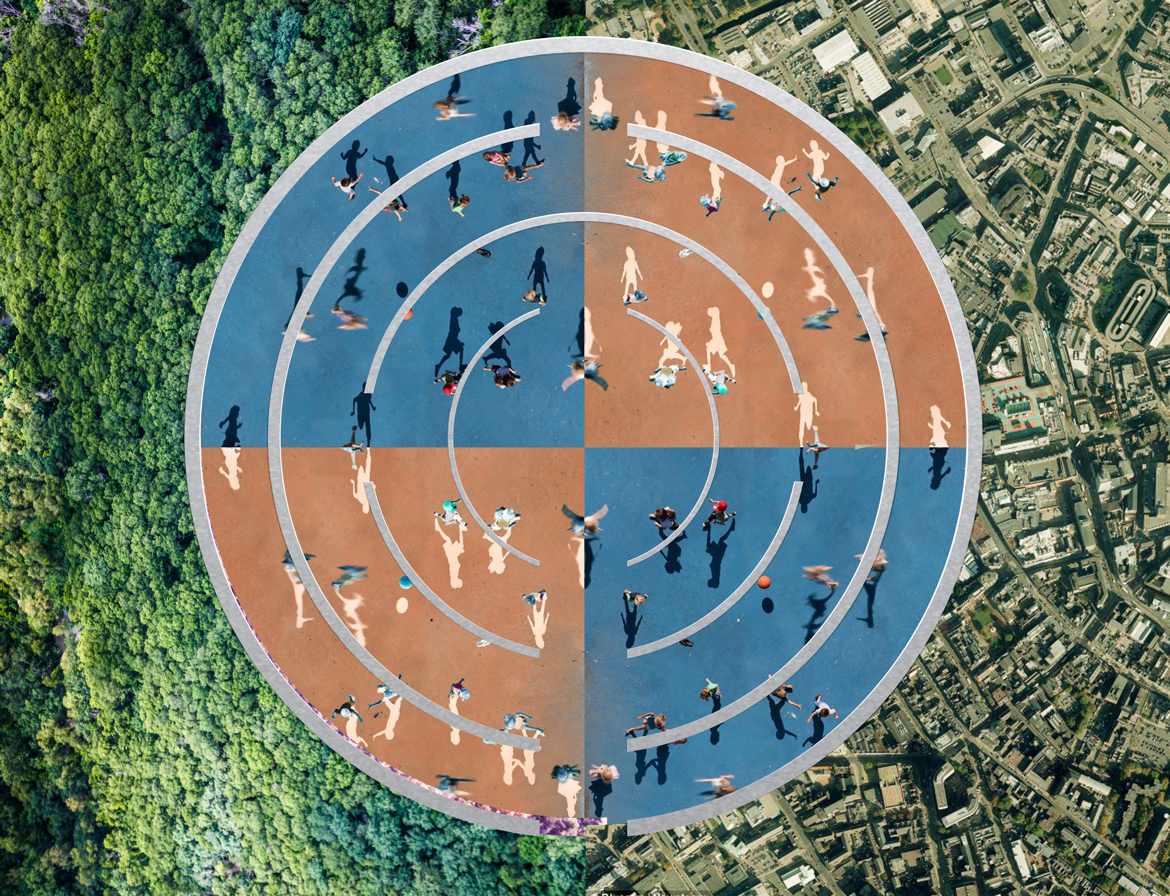

The Office Landscape
The Office Landscape is a short film that proposes what the work environment could be in the future of Los Angeles in 2027. The film is a critical narrative that examines the future of labor and the resulting outcomes. The project examines the banality of the corporate office of both past and present as a foundation to work towards the future. Computers due to machine learning, automation, and algorithms will become the primary workers changing work life for humans. White collar employees responsibilities will change from intellectual labor to monitoring the progress and labor of machines. No longer bound to the manual aspects of labor employees are idle and freed from the constraints of a workplace. However, there is a still a need for a physical landscape to organize and house employees who need structure and separation of work and leisure. The resulting landscapes that these new workers occupy will allow them to idle while they work. Boredom becomes central to the worker as they spend less time working and more time goofing off. Three archetypes of the modern tech worker (Software Engineer, Chief Technology Evangelist, General Manager) are depicted as they work throughout the day. The water cooler serves as one of the few places to have a human to human interpersonal relationships.
Year
2017
Discipline & Research Area
Design Research, Speculative Design, Future of Labor, and Automation
Responsibilities
Research, Concept Development, Set Design, and Video Editing
Research & Inspiration
The Office Landscape derives its inspiration from the tech world. Primarily, I sought to understand how huge technology corporations are supported by such a small number of employees. In 2013 Facebook offered to acquire SnapChat for $3 billion1. However, SnapChat rejected the offer. At the time the company employed 20 people. SnapChat's valuation and employee size describe this modern phenomenon of a just a few people creating a company worth enormous amounts of money. As more industry becomes tech related it is foreseeable that this trend will continue.


Figure 1: This collage illustrates the dichotomy of work seeking natural spaces to reinvigorate the mind to work more. Companies want employees to live, work, and play in the office. However, this is just a poor facsimile of work-life balance.
Collage, Materiality, and Space
Collage served as a way to ideate how this landscape could come to fruition. Specifically, I focused on the materiality of the space to activate the banality of the environment. Since work's engagement diminishes in my proposed future the materials must engage and comfort employees to make up for the loss of the social environment. Gold, marble, glass, copper, plants, water become the material components that try to overcome the boredom while creating a different dullness then the beige cubicle of years past.


Figure 2: This collage illustrates the need for materials to activate the environment and holo-presence to provide the worker with a social setting. Also, pictured is a marble water cooler.


Figure 3: This axonometric drawing is inspired by Mecca as the water cools the central gold computer and humans gather to share a water cooler conversation.
Film
The film is a culmination of projecting the behavior, materiality, and spatial aspects of a future work environment in Los Angeles. I incorporated a voice-over to help describe the tone and satirize humanity from its position in the hierarchy.
Figure 4: The film imagines a normal working day for three employees. (1) Software engineer (2) Chief Technology Evangelist (3) General Manager
Reflection
Exploring the human aspects of how technology is affecting the world is something I continue to develop in my practice. The absence of "work" or what we consider to be work in today's context is a subject area that no matter what background such as business, economics, government, or technology must be addressed and resolved. The Protestant belief of deriving meaning from work is a relic of the past and we need to reconsider how we derive meaning when we will have a different relationship to work.
Thanks to Sally Liu, Stephanie Cedeño, Mike Milano, and Joshua Bradley for acting and providing a stellar voice-over.
Notes
1. http://www.businessinsider.com/snapchat-early-and-first-employees-2013-11?op=1
© Jason Wong. All Rights Reserved.
